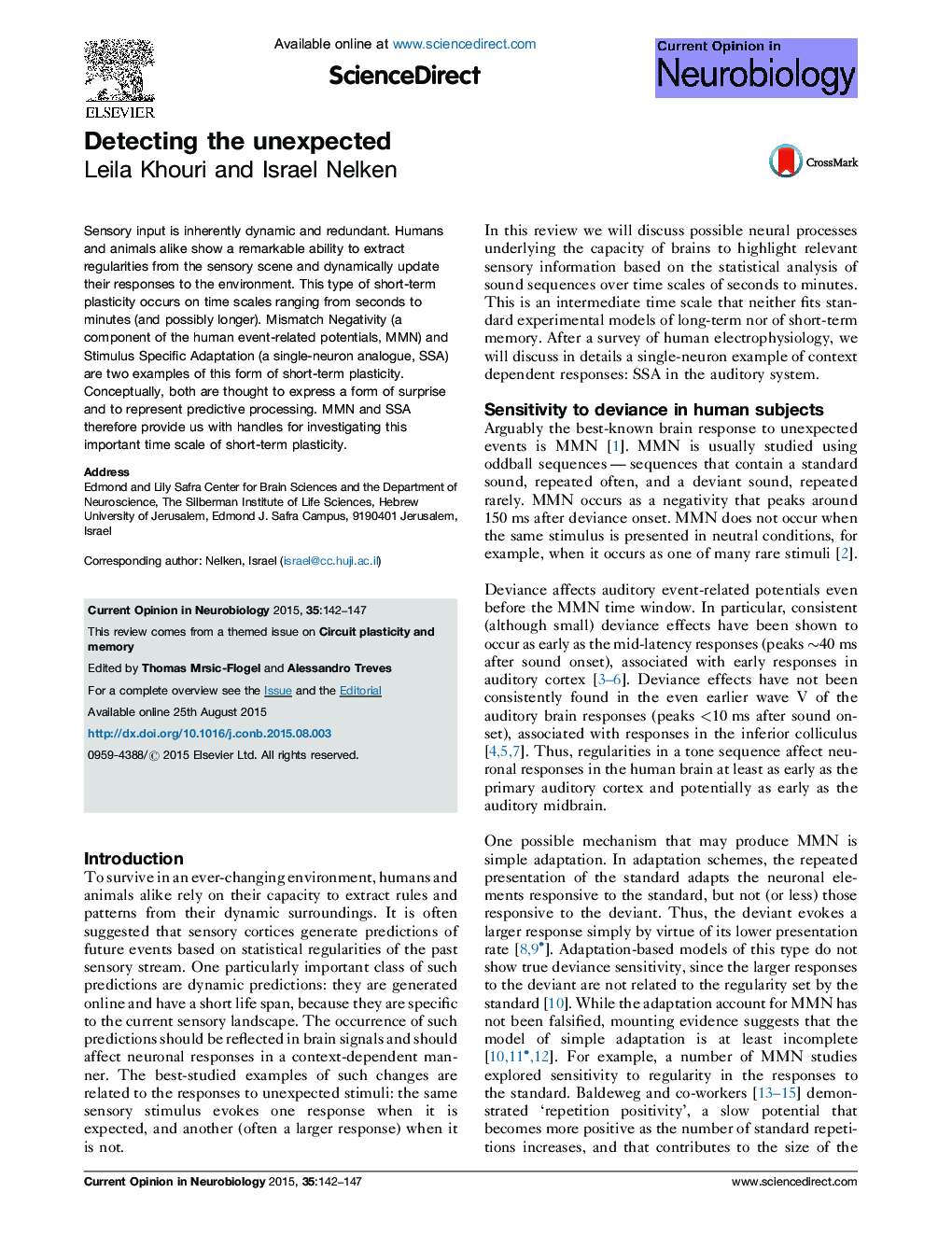| Article ID | Journal | Published Year | Pages | File Type |
|---|---|---|---|---|
| 6266388 | Current Opinion in Neurobiology | 2015 | 6 Pages |
â¢Nervous systems often show adaptation to the on-going statistics of the sensory scene.â¢Such adaptive mechanisms may be expressed as sensitivity to stimulus deviance.â¢We review animal and human studies with particular focus on deviance detection in audition.
Sensory input is inherently dynamic and redundant. Humans and animals alike show a remarkable ability to extract regularities from the sensory scene and dynamically update their responses to the environment. This type of short-term plasticity occurs on time scales ranging from seconds to minutes (and possibly longer). Mismatch Negativity (a component of the human event-related potentials, MMN) and Stimulus Specific Adaptation (a single-neuron analogue, SSA) are two examples of this form of short-term plasticity. Conceptually, both are thought to express a form of surprise and to represent predictive processing. MMN and SSA therefore provide us with handles for investigating this important time scale of short-term plasticity.
